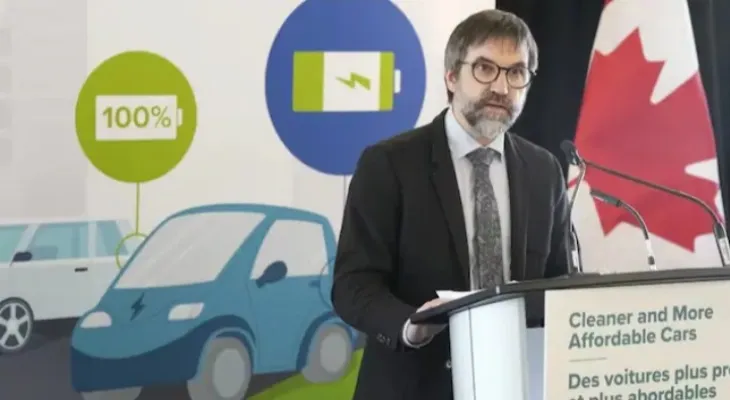Search here
Newspaper
Search here

Arab Canada News
News

Published: December 19, 2023
The new regulations published by Environment Minister Steven Guilbeault this week will lead to the end of new passenger car sales powered solely by gasoline or diesel by 2035.
Guilbeault said the electric vehicle availability standard will encourage automakers to provide more battery-powered cars and trucks in Canada. He said: "We are at a turning point," pointing to the significant growth in electric vehicle sales in Canada and demand previously exceeding available supply.
Automakers will have the next 12 years to phase out combustion engine cars, trucks, and SUVs, with a requirement to gradually increase the percentage of electric models offered for sale each year.
The electric vehicle sales mandate regulations will be published later this week, as they are preparing a system that requires each automaker to demonstrate that the minimum percentage of vehicles they offer for sale are either fully electric or long-range plug-in hybrids.
It will start at 20 percent in 2026 and increase slightly to 23 percent in 2027. After that, the electric vehicle share will increase much faster, so by 2028, 34 percent of all vehicles sold must be electric. – 43 percent by 2029 and 60 percent by 2030.
This figure continues to rise until reaching 100 percent in 2035.
In the first three months of this year, one in every 10 new registered vehicles was electric, indicating that electric vehicle sales need to double over the next three years. They have already doubled in the past three years, rising from 38,425 electric cars sold in the first nine months of 2020 to 132,783 in the first nine months of 2023.
This policy will be regulated under the Canadian Environmental Protection Act, and credits will be issued to automakers for the electric vehicles they sell.
In general, a fully electric model will generate one credit, with plug-in hybrid cars receiving a partial or full credit depending on the range they can achieve on a single charge.
Manufacturers that sell more electric vehicles than needed to meet their annual target can either bank those credits to achieve goals in future years or sell them to companies that did not sell enough.
They can also cover up to 10 percent of the credits they need each year by investing in public fast charging stations. Every $20,000 spent on DC fast chargers that are operational before 2027 can earn the equivalent of one credit.
Automakers that do not meet their sales requirements can cover the shortfall by buying credits from others who exceed their targets or through investment in charging stations.
Automakers can also start earning some credits to meet their 2026 and 2027 goals over the next two years – an effort by the government to encourage faster transition.
Comments